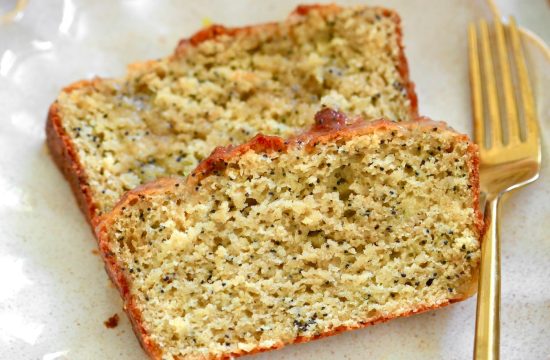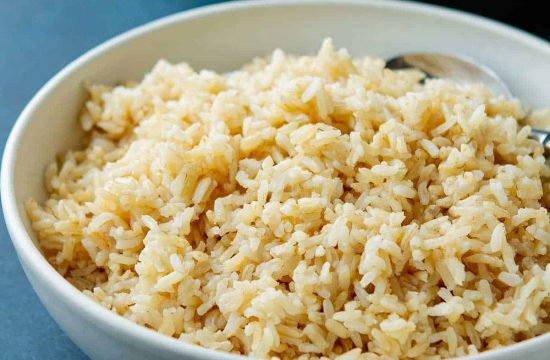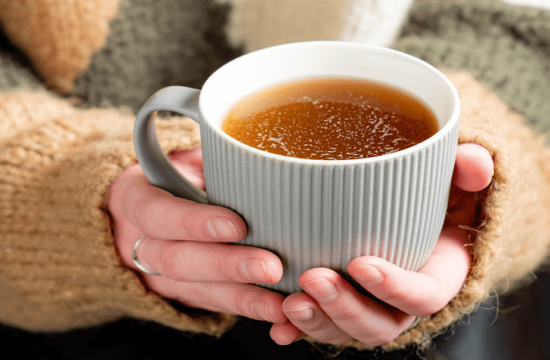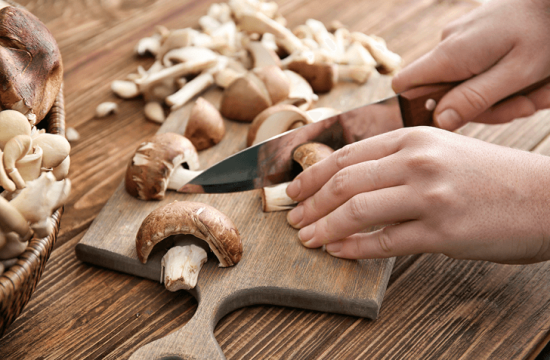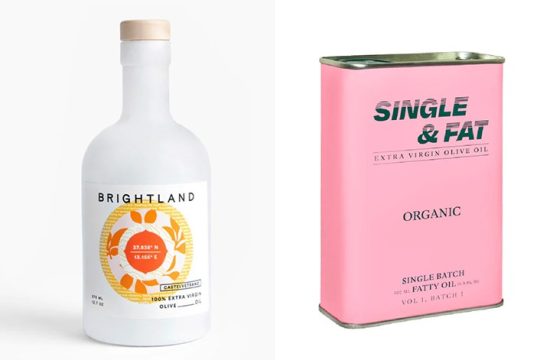Article by Dr Raghuram Y.S. MD (Ay) & Dr Manasa S, B.A.M.S
Cupping therapy is a popular therapy which works on the principles and basics of bloodletting, mainly the wet cupping method. All methods of cupping therapy are not involved in bloodletting.
Bloodletting was popularly and successfully practiced in ancient India and was firstly propagated by the surgical school of Ayurveda i.e. Shalya Tantra, in the name of ‘raktamokshana’ or ‘asrk visruti / asrk visravana’ – both meaning ‘bloodletting’.
Master Sushruta is known as ‘father of Indian Surgery’ and his treatise ‘Sushruta Samhita’ has abundant references of raktamokshana used in surgical practice to treat wide array of disorders. It is the fifth karma amongst the ‘Panchakarma therapies’ enlisted by the shalya school of medicine (surgical school).
Master Sushruta has even considered that ‘rakta i.e. blood tissue is the chaturtha dosha – the fourth dosha’. This concept forms the seed of development of bloodletting to be considered as an important tool of Ayurveda clinical practice. Master Sushruta has included raktamokshana amongst the ‘shashti upakramas’ i.e. sixty therapies.
Related Reading –
Ayurveda has explained different kinds of bloodletting amongst which ‘alabu’ and ‘ghatiyantra’ are important yet less practiced methods as far as Ayurveda clinical practice is concerned. They basically work on the principle of ‘sucking the blood from a marked area of the body, through the vacuum created by the apparatus used for bloodletting’. The other types of bloodletting include jalauka – application of leech, sringa – horn, suchi – needling, prachanna – scraping and sira vyadha – vein puncture
Alabu, Ghatiyantra and Shringa vs Cupping Therapy – ‘Cupping Therapy’ works on the same principle used in ‘alabu’ and ‘ghatiyantra’ modules of raktamokshana. Alabu and Ghatiyantra are also ‘cup like’ apparatus, similar to those used in cupping therapy.
- Alabu is a cucumber whose pulp is removed by making an opening at one end. The empty alabu is used for bloodletting using the principle of suction through vacuum created inside it.
- Similarly, ghatiyantra is a small sized earthen vessel used on the same principle of alabu.
- Sringa is the horn of an animal, whose inside has been hollowed out and used on the same principle of alabu. The only difference is that sringa is used manually, for sucking the blood from the desired and selected area.
Note – All cupping therapy types do not include ‘bloodletting’. Bloodletting is a part and parcel of cupping therapy. Thus, raktamokshana can be done as a part of cupping therapy and the therapy also consists of ‘non bloodletting’ measures.
In this article, we shall discuss about Cupping Therapy and its benefits.
Cupping Therapy – introduction
Cupping Therapy – is an ancient alternative medicine and traditional healing method that is being practiced for thousands of years in different corners of the world for successfully treating many ailments including back and neck pains, headaches etc. It is a therapy in which a trained therapist puts specially designed cups on the area of skin selected for therapy and leaves them in place to create suction. It has its origin from China and West Asia. It is done for many purposes, mainly for pain relief. It is also used for the purpose of treating inflammation, enhance blood flow, detoxify the body of its toxins, to provide relaxation and feeling of wellbeing. It is also regarded as a type of deep tissue massage.
Some also consider cupping therapy as pseudoscience and its practice as quackery.
Cupping therapy is practiced in Asia, Middle East, Eastern Europe and Latin America as an alternative medicine.
Principle – Suction is the main principle used in cupping therapy. This therapy uses the force of suction to pull the blood towards or away from the surface of the skin / area of administration of cup. This in turn enhances blood flow to the affected area. The basic idea behind this is to increase the natural healing responses of the body in these areas.
How it is done?
The physician or therapist conducting the cupping therapy uses many suction cups for this purpose. He places these cups on the affected places i.e. places of the body selected for sucking the blood, including the arms, legs, back, stomach or other parts of the body. The suction force or the vacuum created by such suction force inside the cup pulls the skin upwards.
Other Names
- Cupping
- Cup therapy
- Suction cup therapy
Benefits and areas of use
Cupping therapy is known as ‘pain relief therapy’. It is preferred to relieve many conditions that cause pain and wide array of chronic health issues.
Below mentioned are the potential benefits of cupping therapy –
- Reduction of pain
- Reduction of inflammation
- Increases blood circulation
- Improvisation of blood flow
- Decrease of muscle tightness
- Increase in range of motions / movements
- Relieves muscle tension which in turn improves blood flow and promote cell repair
- Helps in forming new connective tissues
- Helps in creating new blood vessels in the tissue
- Low to moderate evidence that it can reduce pain associated with musculoskeletal pain and myofascial pain syndrome
This therapy is used in treating many diseases but mainly to ease the symptoms of the below mentioned conditions –
- Painful conditions like – rheumatoid arthritis, shoulder pain, back / low back pain, neck and knee pain and carpal tunnel syndrome
- Headaches and migraine headaches
- Hypertension
- Irritable bowel syndrome / disease and other similar gastrointestinal disorders
- Breathing disorders including Cough, Dyspnoea, Asthma
Other conditions claimed to be treated with cupping therapy
- Conditions causing muscle aches and pains
- Facial paralysis
- Chronic low back pain
- Cervical spondylosis
- Lumbar disc herniation
- Brachialgia
- Diabetes mellitus
- Hypertension
- Acne
- Shingles
- Atopic dermatitis,
- Psoriasis
- Fevers
- Indigestion, poor appetite
- Infertility
- Menstrual cramps
- Nasal congestion
- Stroke
- Conditions commonly treated with acupressure – digestive issues, skin disorders etc
More detailed studies and research is needed to prove the exact accuracy and effectiveness of cupping therapy in these mentioned conditions.
Adverse effects of cupping therapy, mainly wet cupping and fire cupping include skin discoloration and bruising.
Disadvantages – It has been noted that cupping therapy would cause bruising of the skin wherein the therapy is done. This can lead to skin infection. Strong evidences to prove the benefits of cupping therapy are not sufficiently available. There are mixed evidences on the benefits of cupping therapy. On the other hand, it is found that the risks related to this therapy are generally low.
Methods and procedures of doing ‘Cupping Therapy’
Mode of action – Though it is not clear how exactly cupping works in relieving pain and symptoms of diseases for which it is administered due to inadequate research and evidences, the hypothesis is that –
The suction from cupping draws fluid / blood into the area treated with it.
↓
Due to the force of suction, the capillaries under the skin get expanded and breaks open.
↓
The areas of the body where cupping is done get richly supplied and replenished with healthier blood flow. The circulating toxins are also released in the process.
↓
This stimulates and brings about normal and proper healing at the cellular level.
Methods of Cupping
Cupping therapy is done in different methods.
The steps (involved) in which cupping is done varies slightly depending on the chosen method.
Once the cups are placed in area selected for the therapy, the physician or provider would leave them in place for several minutes. In some methods, the cups are just moved briefly so as to cause stretch and provide massage to the selected area.
Classification of Cupping Therapy
Below mentioned are the different ways in which cupping therapy is classified –
1. Technical types
- Dry cupping
- Wet cupping
- Massage cupping
- Flash cupping
2. Power of suction related types
- Light cupping
- Medium cupping
- Strong cupping
3. Method of suction related types
- Fire cupping
- Manual cupping
- Electrical suction cupping
4. ‘Materials used inside the cups’ types
- Herbal cupping
- Water cupping
- Ozone cupping
- Moxa cupping
- Needle cupping
- Magnetic cupping
5. ‘Area treated’ types
- Facial cupping
- Abdominal cupping
- Male cupping
- Female cupping
- Orthopaedic cupping
6. Other cupping types
- Sports cupping
- Aquatic cupping
7. Dry and Wet types
a. Dry cupping – Heated cup is placed on the skin of the back, chest, abdomen or buttocks. Here, cooling of air is believed to create suction effect.
Fire cupping – Cotton ball soaked in pure alcohol is clamped by forceps and lit with fire. In one motion it is placed into the cup and quickly removed while the cup is placed on the skin. The air in the cup is heated by the fire, which reduces in volume after cooling creating a negative pressure inside the cup. When the cup is quickly placed onto the body, the skin is sucked up by the negative pressure.
Gliding cupping or sliding cupping is a variant wherein a better seal between the cup and skin is created which also allows the cups to glide over the group of muscles, enabled by application of massage oil over the area to be subjected to the therapy.
At the place of cupping, dark circles are formed because of capillary rupture just under the skin. Sometimes burns are also caused.
b. Wet Cupping (Hijama – sucking) – is also called medicinal bleeding. Herein blood is drawn by local suction from a small skin incision. Evidences suggest that this type of cupping is popularly practiced in many parts of the Muslim world. The first reported usages of this type of cupping are found in the Islamic hadith.
Basic Methods of Cupping
Basically, cupping is of two types –
- Dry cupping
- Wet cupping
Both these types are conducted in the same way. Flammable substances such as alcohol, paper or herbs are put in the cup / cups chosen for therapy and set it on fire. As the fire goes out, the cup is put upside down on the chosen area of the skin for therapy. The air inside the cup cools and would create vacuum. This vacuum causes your skin to rise by creating suction. The skin becomes red as the blood vessels in that part of the skin expands. The cup is usually left in place for about 3 minutes approximately. In the modern version, the therapist uses a rubber pump in place of fire to create vacuum inside the cup. When the intention is to give a massage-like effect, silicone cups are used and moved from one place to the other on the skin.
Dry Cupping – It is also called as suction only method. In this method, the inside of the cup is heated. Following the traditional method a cotton ball soaked in alcohol is taken. It is lit with fire. This head coming from the cotton ball is used to heat the inside of the cup chosen for therapy. This heat creates vacuum inside the cup by pushing all oxygen out of the cup. In modern days, the method is slightly changed and simplified. Herein a suction device is used to remove air from the cups so as to create vacuum. When this cup is applied, the vacuum created in it would pull the skin up into the cup.
Running Cupping – This is a method in which suctioned cups are moved around the body after application of little oil to massage the desired area chosen for cupping.
This method of cupping is done just like dry cupping but is done after a little lubrication of the skin. Before cupping, the physician or provider would apply oil or lotion to the skin or place of the body where therapy is intended to be done. Later the cups are placed on the selected area of the body, the cups are moved gently in different directions over the affected area of the body.
Wet Cupping – This involves both suction and controlled therapeutic bleeding as in bloodletting. The cup is left in place for about 3 minutes so as to create a mild suction. Later the cup is removed. The physician or therapist now uses a small sterile scalpel to make light and tiny cuts on the skin subjected to cupping. This is followed by suction to draw out a small quantity of blood.
After wet cupping therapy, many doctors would give antibiotic ointment for application and bandage so as to prevent infections. The goal is to make skin look normal and healthy within 10-14 days. It is believed that the body toxins and harmful substances are eliminated from the body following wet cupping therapy and this promotes healing.
Bleeding Cupping type of Wet Cupping– The physician or therapist, inn this procedure, will first lightly puncture the skin using sterile needles before placing the cups. The vacuum produced in the cups imparts sucking effect and the blood is suctioned into the cup. The toxins are released through this suctioned blood collected in the cup.
It is this type of ‘bleeding’ cupping wherein bloodletting is done using cup therapy which can be correlated with alabu and ghatiyantra types of raktamokshana. Sringa type of raktamokshana too may be included in the same.
Some providers do ‘needle cupping’. First the acupuncture needles are inserted and then the cups are put over them.
Flash cupping – is where quick, repeated suction and release of cups is done on an area of the body
Subsets of cupping
Facial cupping, sports cupping, aquatic cupping and orthopaedic cupping are the subsets of cupping therapy.
On which regions of the body will the cups used in cupping therapy be placed?
Though the back is the most common area of the body for the cups to be used in cupping therapy, the practitioner or therapist would also place the cups meant for cupping therapy in one or more places of the body including chest, abdomen, legs and butts as and when needed. Cups will be placed on the face if one is due to receive facial or cosmetic cupping.
How many cups are used in cupping therapy?
The number of cups used depends on the method of treatment. Multiple cups may be used for a session of therapy. On an average, the therapy providers may use between three to five cups at a time. In some cases, up to seven cups may be used. It is not common to use more than seven cups in a single sitting of treatment.
What types of cups are used in cupping therapy?
Usually, cups made up of glass or plastic are used in cupping therapy. The other types of cups used in the therapy include –
- Ceramic cups,
- Metal cups
- Bamboo cups
- Silicon cups
- Earthenware
What materials are used in cupping?
Cupping therapy involves use of many things, including herbs, water, magnets, acupuncture needles, moxibustion, electrical stimulation and electrical stimulation
Facts that clients undergoing ‘cupping therapy’ should know
Rupture of capillaries – As already said, cupping therapy would impart suction force on the skin. This would break open the capillaries beneath the skin leading to bleeding. This is quite natural and a part of the treatment.
Cup marks – One who undergoes cupping therapy will develop red, round marks of the cup on the skin. Generally, these marks should fade off in about a week or two. These marks will resemble bruises. In fact, they are not true bruises which injure the muscle fibres.
Pain around cupping area – Generally, cupping will not cause pain. During the procedure, one would experience tightness of the skin caused due to the suction and vacuum. One may also feel bruised and slightly sore after the therapy but not severe pain or discomfort.
Specialists who would perform cupping therapy
Below mentioned categories of healthcare providers can perform cupping therapy after having received training and mastering the same –
- Medical doctors
- Physical therapists
- Chiropractors
- Massage therapists
- Acupuncturists
Duration of the session of cupping therapy
Dry cupping – the cup is usually kept in place for about 5-10 minutes.
Wet / bleeding cupping – the practitioner pulls out the stagnant blood out of a small incision made to draw blood, with the help of the suction of the cup.
Running cupping – usually oil is applied before suction is used. Following this, the cups are slowly moved around the selected area. This would create a massage-like effect. The session would last between 10-60 minutes or more depending on the kind of service one receives.
Flash cupping – In this, the cups are suctioned quickly and then released. It is usually done in the same generalized area of the body. The process should be completed in 5-10 minutes time.
Time duration needed for the cupping marks to disappear
Usually, any cupping marks or discoloration caused by cupping therapy should go away within 7 days following the end of session.
Risks / complications of cupping therapy
Though cupping therapy carries low risk, one might experience the below mentioned complications –
- Bruising and burns caused by the heat of cupping therapy
- Skin infections
- Scarring of skin
- Itching in the skin
- Muscle tension and soreness
- Headaches
- Fatigue
Vasovagal syncope – Some people may develop fainting following a drop in blood pressure and heart ache in rare instances, after cupping therapy, mainly after wet cupping, in those passing out with needle sticks. This is called vasovagal syncope.
Side Effects of Cupping Therapy
If cupping therapy is done by trained healthcare professionals it would be safe.
It is usual to find mild discomfort, burns, skin infection and bruises as side effects in the area of the skin which has come in contact with the cups.
Bloodborne diseases such as Hepatitis B and C can spread if the cups and equipment contaminated with blood are not properly sterilized correctly between patients. So, sterilization of these equipment becomes a key issue if these infections are to be avoided.
Some side effects may occur during or immediately after the treatment and include discolouration, circular marks at the place of contact of cups, dizziness, sweating nausea, irritation of skin and pain at incision site.
Other risks include hematoma / bruising and scarring of the skin.
One should see the doctor immediately if these side effects are experienced after the treatment.
A common risk always associated after undergoing cupping therapy, especially wet or bleeding cupping is ‘infection’. On the other hand, if the practitioner or therapist follows the right methods for cleaning the skin with all aseptic precautions, infections occurring before and after the session can be effectively avoided.
Contraindications for Cupping Therapy
It is important to remember that cupping therapy is not for everyone and for every condition. Like every therapy it comes up with its own limitations. Cupping therapy should be avoided in the below mentioned conditions –
- Pregnancy
- Anaemia
- Cardiovascular diseases
- Epilepsy / presence of seizures
- Psoriasis
- Eczema
- Skin ulcers
- Having wounds or sunburn
- Thinning of skin
- Bleeding disorders / haemophilia
- Strokes or history of the same
- Deep vein thrombosis and other blood clotting problems
- Evidence of recent trauma
- Disorders pertaining to internal organs
- If you are on prescribed blood-thinners
Areas of the body wherein Cupping Therapy should not be done
Cupping therapy should not be done on the below mentioned body parts and in below mentioned conditions –
- Veins and arteries
- Nerves
- Lymph nodes
- Eyes
- Orifices of the body
- On varicose veins
- In presence of skin inflammations
- In presence of skin lesions
Effectiveness of Cupping Therapy – how much true?
Though cupping therapy has been practiced over a period of time, its mode of action and effectiveness is a point of debate. The results are seen but its effectiveness has not been explained with authentic clarification and with scientific evidence. The answers are hypothetical. We only have mixed evidence about the effectiveness of cupping therapy. Different reasons, hypothesis and explanations have been given by many experts so as to prove how this therapy might work. The evident results and the success seen in practice of cupping therapy may be a result of combination of the below mentioned reasons.
Cupping therapy might work by –
- Enhancing the blood circulation on the areas where therapy is done
- Increase the red blood cells in the body and in blood
- Removing the toxins from the body through the let-out blood
- Reducing the levels of inflammation in the body
- Stimulating the peripheral nervous system
- Increasing the levels of pain you can tolerate (pain threshold)
- Brings about comfort and relaxation in the entire body due to combination of the above said actions
- Preventing cardiovascular diseases
- Reducing cholesterol and LDL – low density lipoproteins
Is cupping therapy a main therapy?
Yes and no.
Many healthcare providers administer it as a main therapy to treat and combat the health conditions mentioned in the above context. On the other hand, most healthcare providers would just use it as a complementary medicine / therapy. Rather than an independent therapy, cupping therapy is preferably used in combination with traditional Western medicine.
Cupping removes toxins from the body – true or false?
By stimulating local and systemic immune responses, according to some researches, cupping possibly removes toxins from the body.
At the same time, this therapy may also eliminate uric acid, the build-up of which can lead to high levels of acidity in the blood and urine, predisposing the body to a wide array of health issues.
Cupping, likewise is said to influence lymphatic system in a positive way. Interrupted lymph flow would cause buildup of fluids in the body which would prevent the elimination of toxins from the body. The lymphatic system’s balanced health is very much essential for expelling the wastes from the body. Cupping would help in increasing the lymph flow and on the other hand would also prevent the buildup of unnecessary fluids in the body. Lymphatic drainage massage is also a good solution for this issue.
There are promising evidences of the detoxifying effect of cupping therapy but not sufficient enough. This calls for more deeper research so as to confirm this effect.
What symptoms or complications of cupping therapy should alert you to meet the doctor?
Meet your healthcare provider / doctor if you experience burns, extreme pain, fever, soreness, skin infection which is not going away and redness, tenderness or yellow discharge (from the area subjected to cupping therapy) following cupping therapy.
History of Cupping Therapy
We do not get the exact origin of cupping therapy. One might think that cupping therapy is a new and trendy method of healing but it’s recognition and practice dates long back in the timeline of history. Evidences of cupping therapy being practiced dates back to ancient Chinese, Egyptian and Middle East cultures. Therefore, cupping is a part of many ancient healing systems which includes Chinese, Tibetan, traditional Korean and Unani.
Eber’s papyrus (1500 BC), Ancient Egypt – is one of the oldest medical textbooks in the world to mention cupping therapy. The earliest evidences that ancient Egyptians were using this therapy way back in 1,550 B.C. are found in the description of the ‘Ebers Papyrus’.
Ancient Greece – It is found that Hippocrates, a Greek physician, also known as ‘father of medicine’ has compiled descriptions of cupping techniques. He used this therapy for internal diseases and structural problems. Roman surgeons used it for the purpose of bloodletting.
Prophet Muhammad – highly recommended its practice. As a result, it was well practiced and developed by Muslim scientists.
In later periods its practice spread across and its multiple forms came into existence throughout Asian and European civilizations.
Ge Hong (281-341 AD) – a Taoist alchemist and herbalist is believed to be the first among the lot to have used cupping in China.
Eastern European Jewish Community – is believed to have used cupping as it is mentioned in Maimonides book on health.
William Osler – recommended use of cupping in the early 12th century, for pneumonia and acute myelitis.
Cupping in Finland – Wet cupping was done at Finland at least in the 15th century and is still a part and parcel of relaxing or health regimens in this country. The cups herein were made of cattle horns with a valve mechanism in it. This was a set up to create partial vacuum by sucking the air out from the valve. This exactly resembles the Shringa (horn) method of raktamokshana (bloodletting) explained in Ayurveda.
Cupping in Traditional Chinese Medicine (TCM) – ‘Pulling up Jars’ – is how cupping is addressed in Chinese – the pinyin. Cupping therapy, as per TCM is used for dispelling the stagnation of blood and lymph and hence improving the qi flow. This principle would help in treating respiratory disorders like bronchitis, pneumonia and common cold.
TCM does not advice this therapy to be done over skin ulcers and also for pregnant women on abdominal and sacral regions. Cupping is usually done on back, neck, shoulder and other musculoskeletal conditions. As a traditional Chinese Medicine Modality – Chinese hospitals use it in practice since 1950s.
TCM believes that the suction offered by cupping helps in facilitating the qi energy (life force) flow in the body. It is also believed that it helps in balancing yin and yang i.e. negative and positive within the body which in turn enhances the body’s resistance power to pathogens and the ability of the body to enhance blood flow and reduce pain.
Iranian Traditional Medicine – Wet cupping is practiced in Iranian medicine. They have two believe methods i.e. cupping with scarification – to eliminate scar tissue and cupping without scarification – to cleanse the body through the organs.
Celebrities who have undergone Cupping Therapy
- DeMarcus Ware – National Football League Player, America
- Alexander Naddour – Olympian
- Natalie Coughlin – Olympian
- Michael Phelps – Olympian
Not many scientific studies have been done related to cupping therapy. Related researches and findings include –
Cupping helps heal acne and herpes zoster and also in pain management (Journal of Traditional and Complementary Medicine – 2015 publication and 2012 report – PloS One publication)
Cupping therapy may be effective in various diseases and conditions including Herpes zoster, Cervical spondylosis, facial paralysis and acne while sufferers are also undergoing acupuncture or medications (Review of 135 studies by Australian and Chinese researchers). They also found that most of these studies could have been biased and suggested that better and further studies would be needed in future.
Cupping Therapy can be used to treat conditions like anaemia, haemophilia, arthritis, fibromyalgia, acne, eczema, fertility and gynaecological disorders, depression, anxiety, asthma, allergies, varicose veins, migraines, high blood pressure etc (British Cupping Society observations). Research works to back up these observations are not available.
Scientific proof, study and research – in support of cupping therapy
Cupping promotes peripheral blood supply, improves immunity and hence alleviates symptoms.
Cupping benefits a variety of conditions including localized or systemic diseases – 2018 review of studies
Cupping promotes blood flow in the skin and changes its biochemical properties, reduces inflammation, boosts cellular immunity, improves local anaerobic metabolism and increases pain thresholds – 2018 review.
A study in 2019 enlists many theories which explain the effects of cupping. Cupping therapy may work in one of the below mentioned ways –
- Alteration of pain signal processing
- Use of pain to reduce pain (counter irritation)
- Releasing nitric oxide and hence stimulating circulation of blood
- Creating artificial inflammation and hence stimulating immune system
- Increasing the levels of interferon and tumour necrotizing factor (immune products)
- Increasing the lymph flow in lymphatic system
- Making changes in Haemoglobin’s functions and molecular structure
- Bringing a decrease in both types of cholesterol
- Decreasing levels of uric acid
‘The mechanical effect of this therapy enhances local blood flow and also stretches the underlying tissues’ – tells a 2017 study
It is also believed that cupping activates a gene that has a critical role in preventing vascular inflammation i.e. Haem-oxygenase-1.
Summary – More researches of good and unbiased qualities are needed to confirm the effects of cupping therapy and also to prove or disapprove the healing mechanism of this therapy.
Critical side of studies and research – against cupping therapy
Studies have revealed that the effectiveness of cupping is currently not well documented for most conditions and that poor quality primary studies, unreasonable design and poor research quality are responsible for systemic reviews of cupping therapy showing the efficacy for the treatment of pain.
Similarly, there is lack of evidence in support of the utility of this therapy in the cure of acne. Single credit cannot be given for cupping therapy in terms of resultant positive benefits since it is often practiced alongside other therapies like acupuncture.
Cupping is also considered as pseudoscientific detoxification ritual. Bruise caused by cupping is a clot and clotted blood is definitely not flowing and therefore cupping cannot improve blood flow to help sore muscles and also cannot remove toxins – states James Hamblin.
Critical remarks – Cupping therapy has been termed as pseudoscience nonsense, a celebrity fad, gibberish and a placebo by Harriet Hall and Mark Crislip. ‘Cupping is laughable and utterly implausible’ states David Colquhoun (Pharmacologist). ‘Cupping therapy is all risk for no benefit, it has no place in modern medicine or at least shouldn’t’ states David Gorski – a practicing surgeon.
‘Cupping could be a health risk and dangerous for those having hypertension or heart problems’ – warning by Cambodian Ministry of Health in 2016
‘Cupping can cause side effects which include scars, burns and infections, persistent skin discoloration. It may also worsen psoriasis and eczema’ – NCCIH statement
Cupping marks are mistaken for signs of child abuse when it is performed on children. The therapy may break the small blood vessels in places where it is applied and result in purpura and petechiae.
Adverse effects – can be local or systemic. Local adverse effects include – burns, scars, linear bruising or streaks (by wet cupping), erythema, darkening of skin, skin ulcers, induction of Koebner phenomenon in susceptible individuals with psoriasis and pain and infection.






